Introduction: In this article – in honor of Memorial Day – Melissa Davenport Berry writes about the Civil War Monument in Concord, Massachusetts. Melissa is a genealogist who has a website, americana-archives.com, and a Facebook group, New England Family Genealogy and History.
Here are photos of the Concord Civil War Monument, erected in 1867 by the town of Concord, Massachusetts, located on the Green in Monument Square.
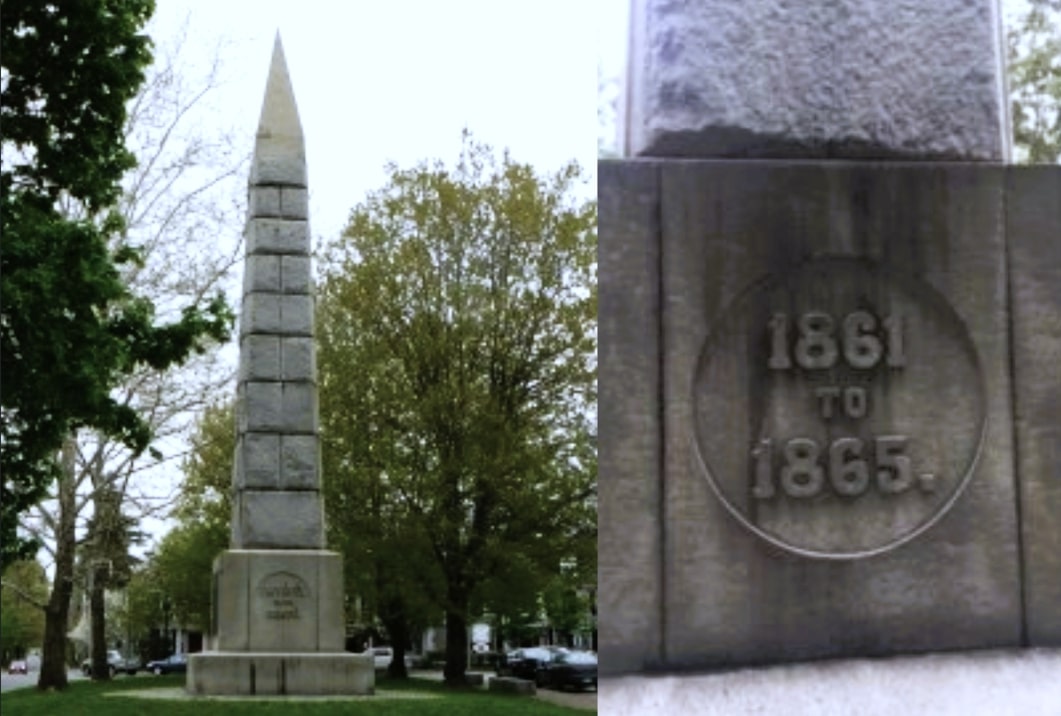
Today I look back at the dedication of the Civil War Monument in Concord, Massachusetts, on 19 April 1867, and some of the many fallen heroes who appear on the monument’s bronze tablet.
I leave a little note at the end of this article pointing out that changes have been made since then, but for the most part I focus on the original monument.
Before discussing the monument, however, it would be only fitting to include the “little women” of Concord who will be forever remembered both in books and film.
Here is a photo of performers dressed in Civil War costumes, taken in the spring of 1932 for the 100th anniversary of Louisa May Alcott’s birth.
In this photo, a clipping from the Boston Herald found in a scrapbook, are the central characters of Little Women, as follows (left to right): “Jo” played by Caroline W. Farnsworth: “Beth” played by Cornelia Lunt (sitting on floor); “Meg” played by Louisa Alcott (Pratt) Kussin, named for her great-aunt Louisa May Alcott; and “Amy” played by Mollie Harlow.
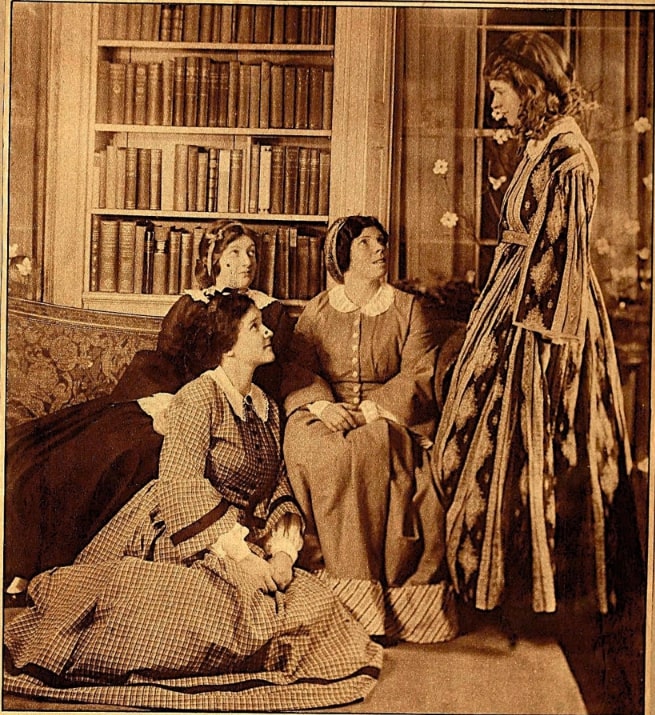
Alcott’s novel, set in the time of the Civil War in Concord, is a reminder of the active Abolitionist movement in the town. Her novel also helps to remember the many fallen heroes of Concord as well as all the other brave lads who fought for the Union.
Alcott went to Washington, D.C., during the war and nursed many wounded soldiers, giving her a firsthand glimpse of the sacrifices and hardships the soldiers endured.
Here is a newsclip from the Boston Journal about the dedication of Concord’s Civil War Monument.

This article reports:
Yesterday was set apart by the people of the beautiful town of Concord, Mass., for the dedication of the newly erected memorial monument to the memory of the men of the town who served in various regiments during the war and fell on the battlefield, or died from disease or wounds while in the service of their country. The day was as lovely as the most enthusiastic could have desired, and the interest of the occasion drew together a large number of people to participate in the celebration. The trains from Boston carried out a large number of persons, to whom the occasion was of special interest, and who also took the opportunity of paying a visit to the ancient town.
This is what was originally inscribed on the monument.
The north face of the monument is inscribed:
1861 to 1865
The east face bears the inscription:
“The Town of Concord builds this monument in honor of the brave men whose names it bears, and records with grateful pride that they found here a birthplace, home or grave.”
The southern face bears:
“Faithful unto Death” and “They Died for Their Country in the War of the Rebellion.”
It also lists the names of 32 townsmen who perished.
Among those listed are Charles Appleton, Company G, 32nd Massachusetts Infantry and three Melvin brothers all born to Asa and Caroline (Heald) Melvin: Asa Heald Melvin (1834-1864); John Heald Melvin (1841-1863); and Samuel Melvin (1844-1864).
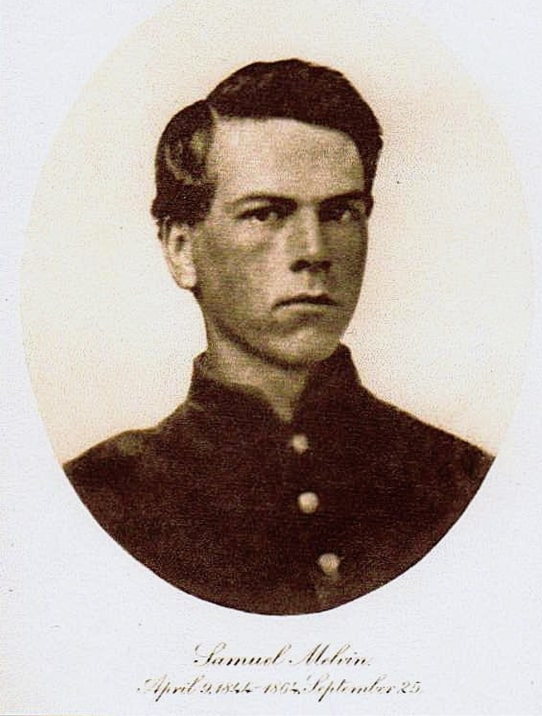
In 1909 a beautiful monument to commemorate the Melvin brothers was unveiled at Sleepy Hollow Cemetery, Concord, Massachusetts. Below is a clip from the newspaper on the dedication.

James Heald Melvin, the only brother who did not serve in the war due to his young age, had the monument erected to honor his three fallen brothers. According to this article the monument cost $30,000 (about $1,054,282 today) and was designed by Daniel Chester French.

The First Massachusetts Heavy Artillery Association along with the Old Concord Post (Grand Army of the Republic) were in attendance and helped to make the dedication ceremony rise to the occasion.
Col. Jeremiah Payson “Jere” Bradley (1848-1927), who sounded the charge at Petersburg in which Asa. H. Melvin was killed, made an eloquent speech,
“…sounding taps at its conclusion with the same bugle with which he sounded the charge.”
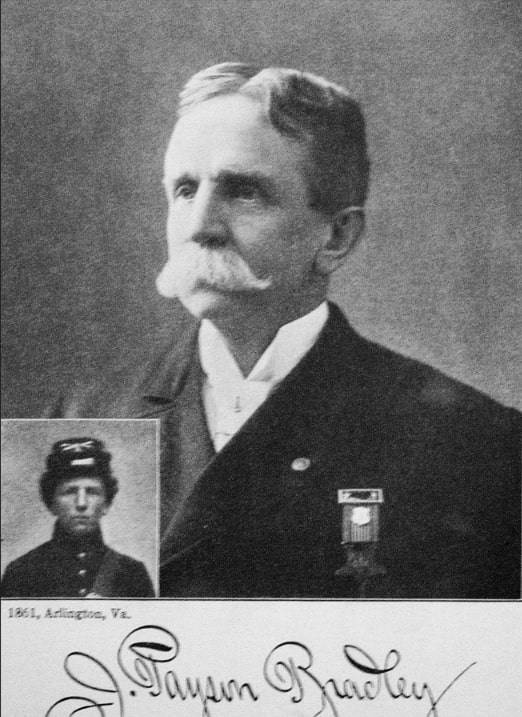
For further intel with a photo of all the men who attended, check out “The Melvin Memorial. Sleepy Hollow Cemetery, Concord, Massachusetts, a brother’s tribute; exercises at dedication, June 16, 1909.”
Another fallen hero listed on the Concord Civil War Monument is Union Brevet Brigadier General George Lincoln Prescott (1829-1864), who was in command of the 32nd Massachusetts and led his regiment with signal gallantry at Gettysburg.
George Prescott is the son of Timothy and his second wife Maria (King) Prescott. He married Sarah Barker Edes, daughter of Robert Ball and Sarah (Barker) Edes. They had one daughter, Alice Barker (Prescott) (Linder) Blaisdell.
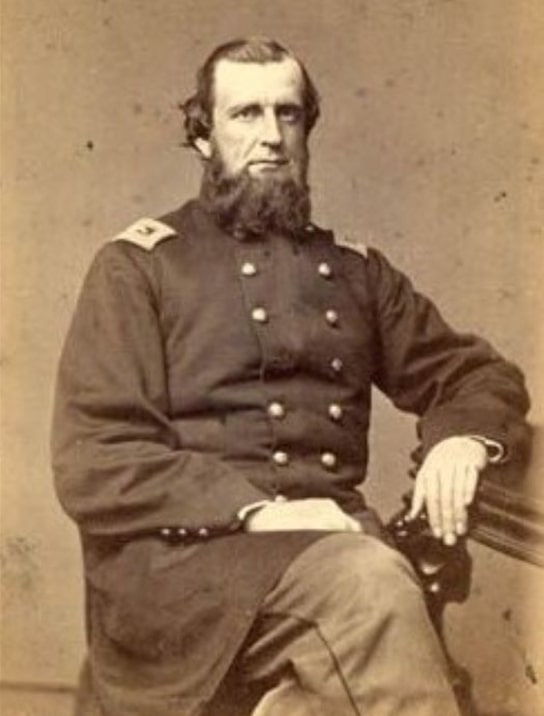
In the long trial of engagements between the Battles of the Wilderness and Petersburg, Virginia, Prescott received a mortal wound, died, and was buried with fellow fallen soldiers in an unmarked field.
For his meritorious devotion to duty, he was brevetted Brigadier General of U.S. Volunteers on 18 June 1864. The 32nd Massachusetts Infantry monument at Gettysburg Battlefield was dedicated to the regiment and him as its commander in 1894.
Here is a photo of the monument to the 32nd Massachusetts Infantry at Gettysburg. On the face of the monument, which resembles a field tent, is written:
“Here the 32d Massachusetts Infy. 2nd Brig. 1st. Div. 5th A. C. withstood an attack of the enemy about 5 o’clock p.m. July 2, 1863. Withdrawn from here, it fought again in the Wheatfield. It lost in both actions in killed and wounded 78 out of 227 officers and men.”
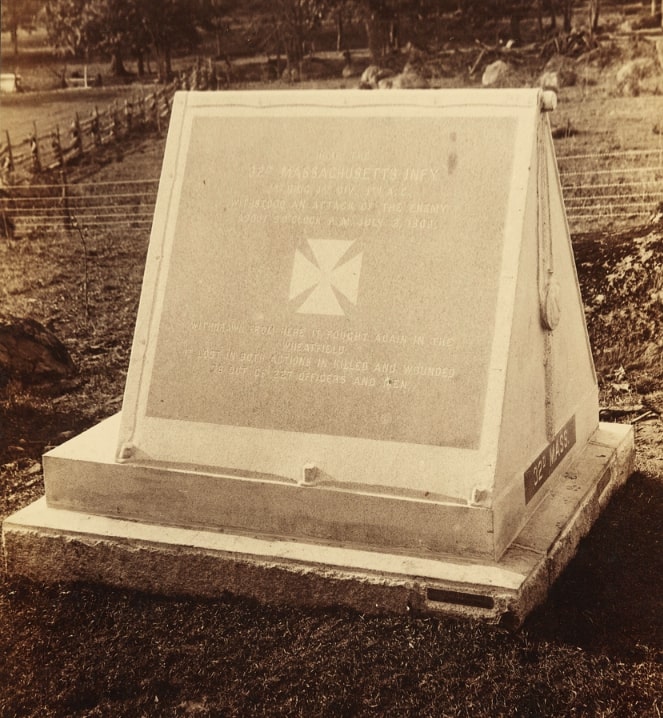
George’s brother-in-law John Shepard Keyes, married to his half-sister Martha Lawrence Prescott, offered these words on the day of the April 1867 dedication of the Concord Civil War Monument:
“We do not forget our heroic dead. It is in remembrance that we dedicate this to the brave men who were faithful unto death. Their lives, their deeds, their deaths we enshrine… theirs were the toils, the hardships, the sufferings… ours are the fruits of their victories. Gratefully, kindly, honorably, we commemorate their example.”
There have been some changes to the original Concord Civil War Monument since the time of its unveiling, and I refer readers to historian and genealogist Barbara Poole’s excellent blog post: “Life from the Roots.”
Memorial Day is the unofficial start of summer. Enjoy your family gatherings, and kindly spare some thoughts to all those who have given their lives in service to our country.
Explore over 330 years of newspapers and historical records in GenealogyBank. Discover your family story! Start a 7-Day Free Trial
Note on the header image: Concord Civil War Monument from the early 1900s. Credit: Library of Congress, Prints and Photographs Division.
